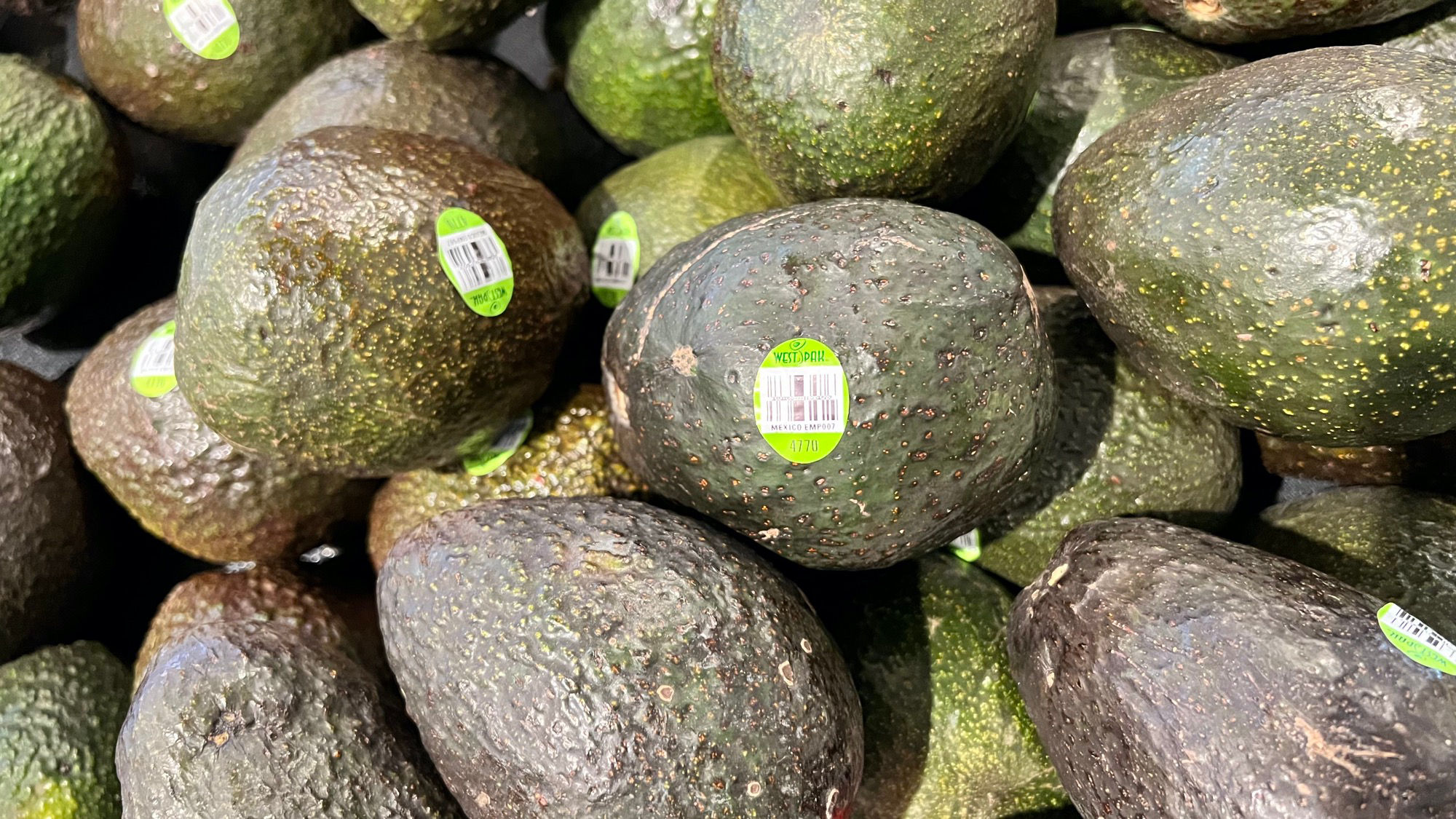Food Labels
Nutrition Facts
Updated December 2024
Posted January 2023

Avocados Tree

Not Ripe Yet

From Mexico

Ripeness
Squeeze the avo if it just barely gives it is ready - you do not want hard or squishy.
Squeeze the avo if it just barely gives it is ready - you do not want hard or squishy.

- Westpak



SIDES
8 IMAGES
Peanut Butter Stuffed Avocado
Everything you Avo Wanted
| EAT LEVEL: |
eatlife.net/recipes/avocado-peanut-butter-cinnamon.php
MAIN
13 IMAGES
Chicken Burritos
The Most Burritoful
| EAT LEVEL: |
eatlife.net/recipes/chicken-bacon-avocado.php
SIDES
11 IMAGES
Spectacu-cumbers
Cream Cheese Cucumber Boats
| EAT LEVEL: |
eatlife.net/recipes/cream-cheese-cucumber.php
MAIN
19 IMAGES + 7:48 VIDEO
Green Avocado Omelette
Avoca-Gogh
| EAT LEVEL: |
eatlife.net/recipes/green-omelette.php
MAIN
25 IMAGES
Chicken Fajitas
Fajita Jolly Good Fellow
| EAT LEVEL: |
eatlife.net/recipes/chicken-fajitas.php
HACKS
18 IMAGES
Slice an Avocado
Move in the ripe direction
| EAT LEVEL: |
eatlife.net/recipes/slice-an-avocado.php
Avocado
The avocado is a medium-sized, evergreen tree. It is native to the Americas and was first domesticated by Mesoamerican tribes more than 5,000 years ago. The tree likely originated in the highlands bridging south-central Mexico and Guatemala. Avocado trees are partly self-pollinating, and are often propagated through grafting to maintain consistent fruit output. Then as now it was prized for its large and unusually oily fruit. Its fruit is botanically a large berry containing a single large seed. Avocados are presently cultivated in the tropical and Mediterranean climates of many countries.WikipediaMexico
Mexico is the world's leading producer of avocados supplying nearly 30% of the global harvest
- The fruit of domestic varieties have smooth, buttery, golden-green flesh when ripe.
- Depending on the cultivar, avocados have green, brown, purplish, or black skin, and may be pear-shaped, egg-shaped, or spherical.
- For commercial purposes they are picked while unripe and ripened after harvesting.
- The nutrient density and extremely high fat content of avocado flesh are useful to a variety of cuisines.
- Possibly originated in the Tehuacan Valley in the state of Puebla, Mexico, although fossil evidence suggests similar species were much more widespread millions of years ago.
- There is evidence for three possible separate domestications of the avocado, resulting in the currently recognized Mexican, Guatemalan, and West Indian landraces.
- The Mexican and Guatemalan landraces originated in the highlands of those countries
- The West Indian landrace is a lowland variety that ranges from Guatemala, Costa Rica, Colombia, Ecuador to Peru
- The three separate landraces were most likely to have already intermingled in pre-Columbian America
- Commercial avocado production is limited to a small fraction of the vast genetic diversity in the species.
- Like the banana, the avocado is a climacteric fruit, which matures on the tree, but ripens off the tree.
- Avocados used in commerce are picked hard and green and kept in coolers at 38-42 F until they reach their final destination.
- Avocados must be mature to ripen properly.
- Avocados that fall off the tree ripen on the ground.
- Generally, the fruit is picked once it reaches maturity; Mexican growers pick 'Hass' avocados when they have more than 23% dry matter, and other producing countries have similar standards.
- Once picked, avocados ripen in one to two weeks at room temperature
- Some supermarkets sell ripened avocados which have been treated with synthetic ethylene to hasten ripening.
- The use of an ethylene gas "ripening room", which is now an industry standard, was pioneered in the 1980s.
WikipediaEtymology
The modern English name comes from a rendering of the Spanish aguacate as avogato. The earliest known written use in English is attested from 1697 as avogato pear, later avocado pear (due to its shape), a term sometimes corrupted to alligator pear.WikipediaHass Avocados
The 'Hass' is the most common cultivar of avocado. It produces fruit year-round and accounts for 80% of cultivated avocados in the world.[36][79] All 'Hass' trees are descended from a single "mother tree" raised by a mail carrier named Rudolph Hass, of La Habra Heights, California.[35][79] Hass patented the productive tree in 1935. The "mother tree", of uncertain subspecies, died of root rot and was cut down in September 2002.
Avocado is the official fruit of the state of California

1g
NET
CARBS
CARBS
0g
ADDED
SUGARS
SUGARS
0g
TRANS
FAT
FAT
2mg
SODIUM
1% DV
1g
SAT FAT
0% DV
0mg
CHOLESTEROL
0% DV
Nutrition Facts
10 servings per container
Amount per serving
% Daily Value*
10 servings per container
Serving size
1 Slice (15g)
Amount per serving
Calories
24
% Daily Value*
| Total Fat 2.2g | 2.56% | |
| Saturated Fat 0.32g | 0.00% | |
| Trans Fat 0g | ||
| Cholesterol 0mg | 0.00% | |
| Sodium 1.1mg | 0.04% | |
| Total Carbohydrate 1.3g | 0.36% | |
| Dietary Fiber 1g | 3.57% | |
| Total Sugars 0.1g | ||
| Includes 0g Added Sugars | 0.00% | |
| Protein 0.3g | 0.00% |
| Vitamin D 0mcg | 0.00% |
| Calcium 1.8mg | 0.08% |
| Iron 0.1mg | 0.00% |
| Potassium 7.3mg | 0.15% |
*The % Daily Value (DV) tells you how much a nutrient in a serving of food contributes to a daily diet. 2,000 calories a day is used for general nutrition advice.
1g
FIBER
4% DV
0g
PROTEIN
0% DV
1g
UNSAT
FATS
FATS
CALCIUM
0% DV
IRON
0% DV
POTASSIUM
0% DV








